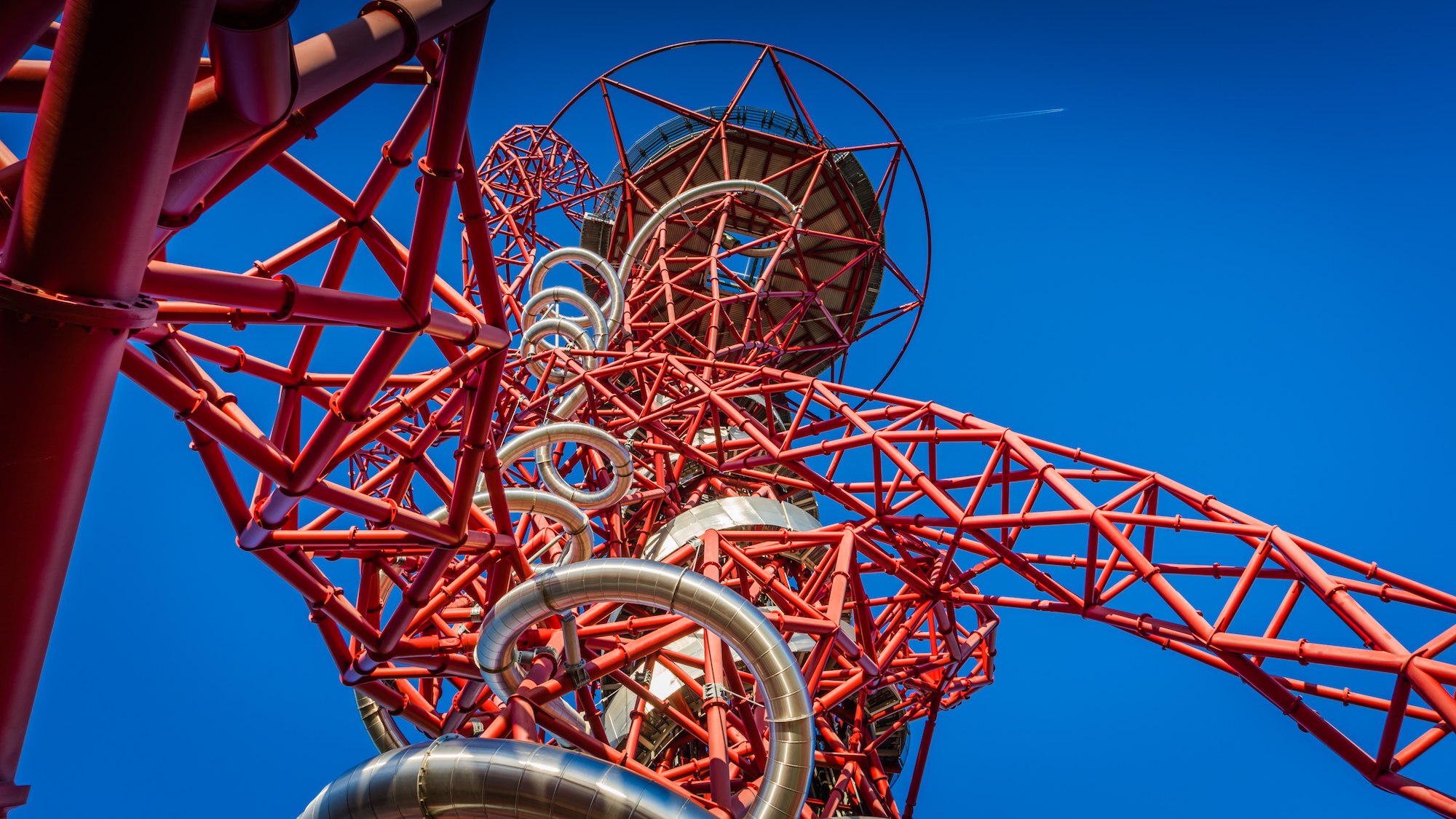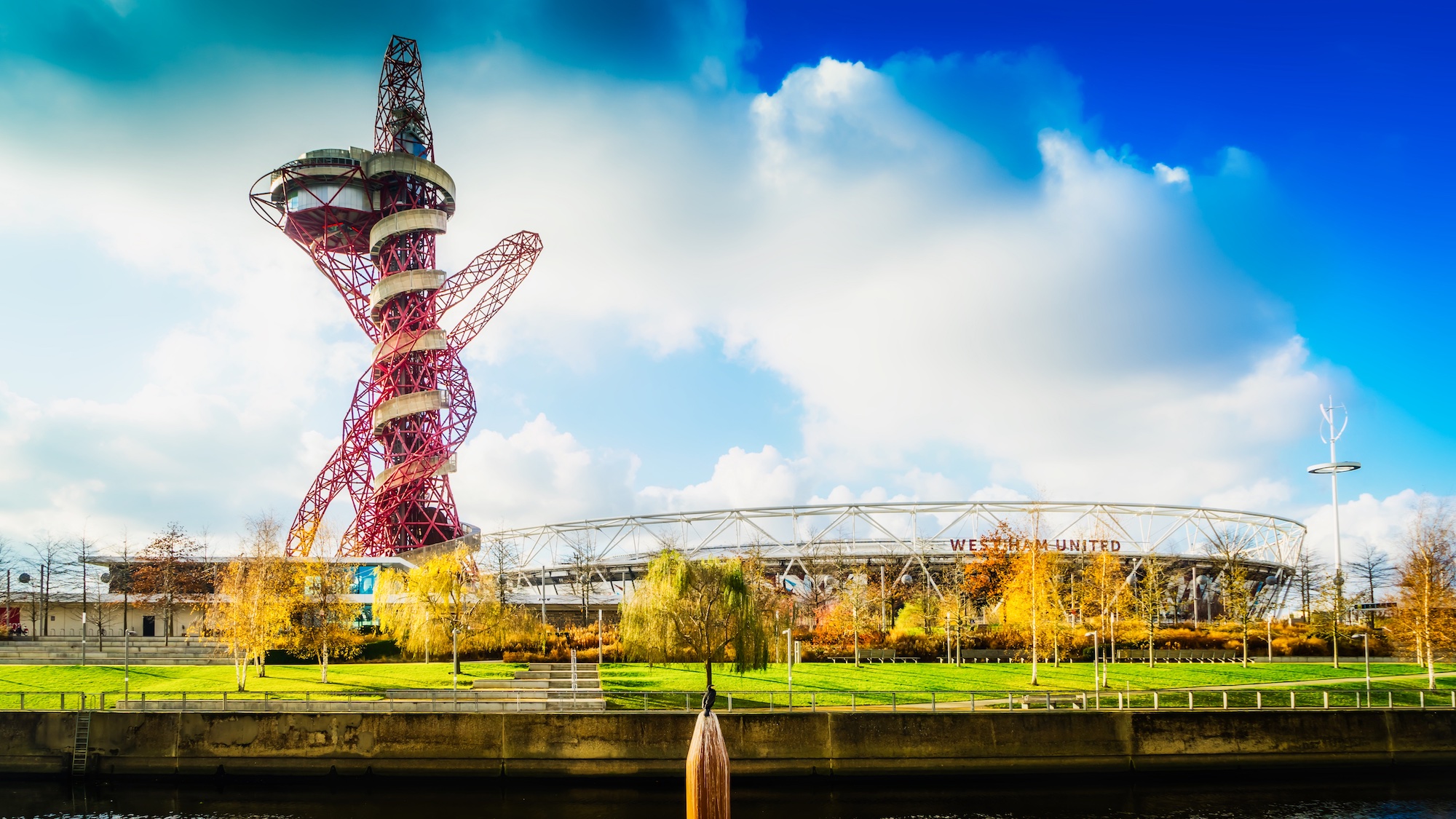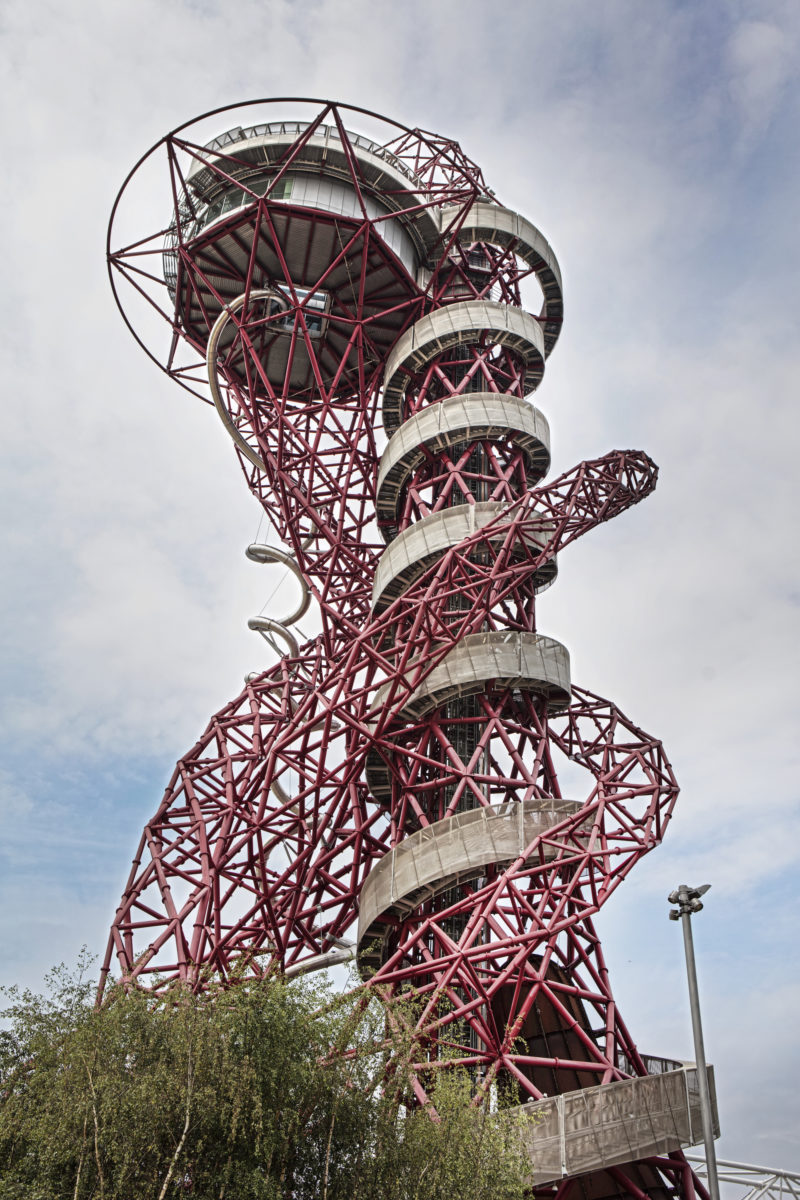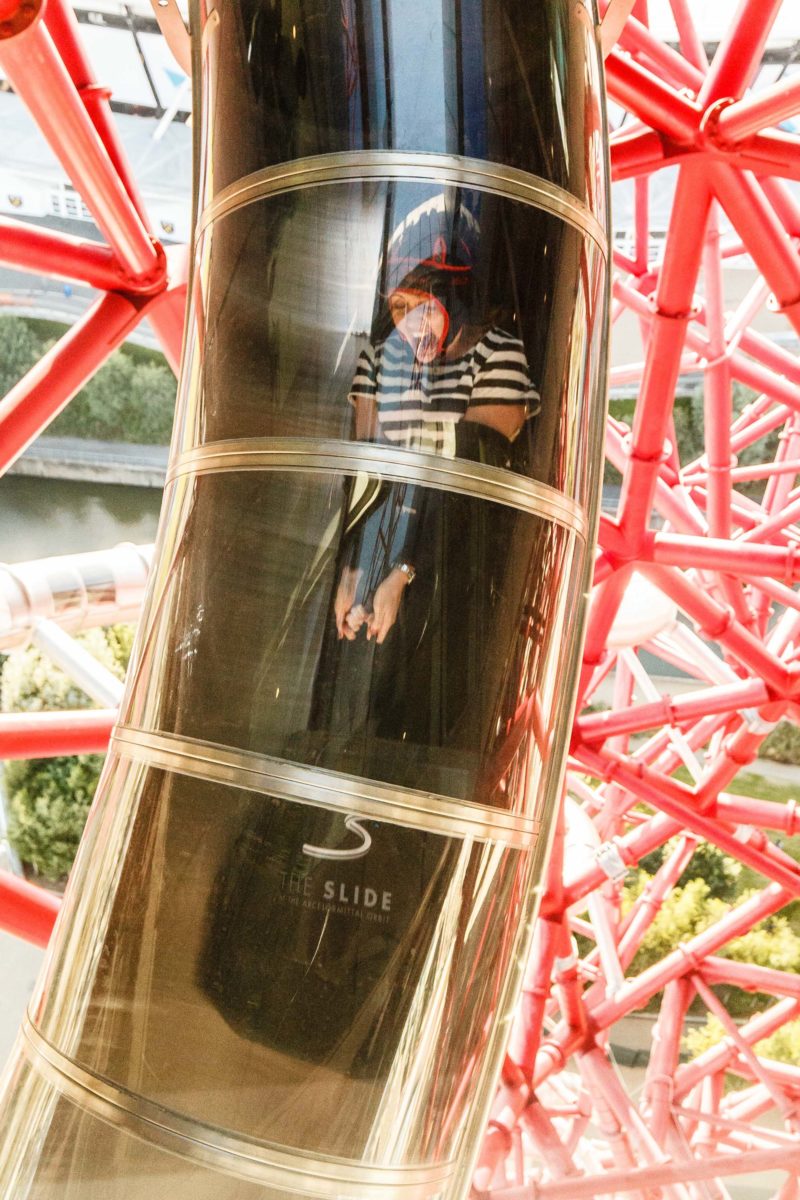
Cantankerous red rails rise out of the ground and reach towards the sky in Stratford, East London, disrupting an otherwise flat landscape. Catchily named the ArcelorMittal Orbit, the sculpture was constructed in 2012 as the centrepiece of the Queen Elizabeth Olympic Park, and has divided onlookers ever since it was erected.
In 2009, amid frantic planning for the London 2012 Olympics, a design competition was held to create a landmark that would be the crowning jewel of the newly designed Olympic Park. Boris Johnson, during his time as Mayor of London, convinced steel company ArcelorMittal to provide the material for the piece. The winning prize was awarded to a collaborative design by Anish Kapoor and Cecil Balmond, an architect and former deputy chairman of Arup. Their proposal allowed visitors to “zoom high into the clouds and explore London’s famous skyline”, suspending them almost 80 metres above the ground.
In 2016, with a view to increasing the profitability of the sculpture, a slide designed by Carsten Holler was added at Johnson’s request. Now, once you’ve journeyed to the summit and absorbed the view, you can enjoy either an abseil or slide, or else a gentle walk to return to earth via a mere 455 steps. As the world’s tallest and longest tunnel slide, the sculpture has ticked many a box for politicians. But for the Stratford and East London community that it claims to enrich, the ArcelorMittal Orbit has proven divisive.

The Olympics have many perks for a host city: the opportunity to create a showstopping opening ceremony, a large injection of tourist money into the economy and a boost to national pride in a country’s population. Public art can also showcase pride; a monumental, beautiful piece of work can instil awe in the onlooker, and signal to visiting audiences that there is wealth, strength and beauty present in a particular place. But there are powerful social forces that govern why an artwork is commissioned, where it will be situated and who it will represent. No matter how pure the intention of the work, it can quickly become muddied.
Eight years later, the vast red structure that now characterises Stratford’s horizon symbolises far more than the London Olympics, with its promise to “Inspire a generation”. The sculpture stands for a polarised community, with wealthy new arrivals to the regenerated area, and further economic concerns. In 2017, the BBC reported that the slide had received 138,245 visitors, and was £12.2m in debt, with interest growing by £700k a year. At £16.50 a ticket, it is hardly the most accessible of attractions.
“There are powerful social forces that govern why an artwork is commissioned, where it will be situated and who it will represent”
Kapoor and Balmond’s artwork also evokes memories of the UK’s historical patterns of displacing low-income communities in the pursuit of quick financial gain and “social cleansing”. A 2013 essay by Paul Watt, titled It’s Not For Us, examined the impact of the so-called Olympic Games legacy on low-income East Londoners. Watt outlines a theory by Peter Marcuse (professor of urban planning at Columbia University), who details that there are several different types of community displacement. Direct displacement involves either physical coercion through housing demolitions or landlord evictions, or economic pressure via rent increases.
There is also an indirect form which Marcuse coins as displacement pressure. This occurs socially, when people see their neighbourhood changing dramatically: their friends leave, shops go out of business and are replaced by those with different clientele. Altogether, the changes in public facilities and support services make the area less liveable. This indirect displacement is not easily measurable, and results in an intangible “feeling” that a family no longer belongs to the area in which they live. Watt concluded that “East London’s contemporary third-wave gentrification involves the wholesale physical, economic and social transformation of deprived inner-city areas, and is increasingly being driven by large-scale regeneration programmes such as the Olympics.”
- The Slide, courtesy of Queen Elizabeth Olympic Park
“It is not enough for art to depict a certain ethos; the economics and politics from which it is birthed must stay true to this ethos as well”
Kapoor and Balmond’s creation didn’t directly gentrify Stratford in itself, but the wider Olympics plan sought to project a sculpted image of Britain by contributing to indirect displacement of the very communities it claimed to represent. It is not enough for art to depict a certain ethos; the economics, politics and circumstances from which a work of art is birthed must stay true to this ethos as well.
The ArcelorMittal Orbit is inextricably linked with the troubled legacy of the London Olympics, and it remains an international icon of urban planning and public art for all the wrong reasons. Many see the remnants of the 2012 games—the regenerated facade of Stratford’s shopping centre, the awkward red sculpture tumbling out of the sky, the privatised green spaces that sprawl over the Olympic Park—not as a symbol of patriotic community spirit, but as a disassociation with surroundings that were once familiar.






